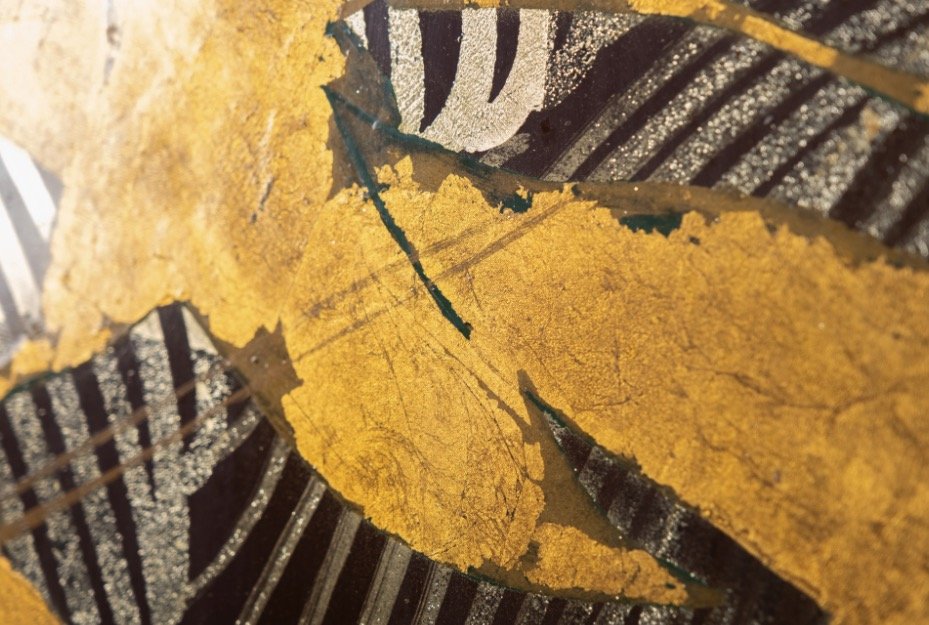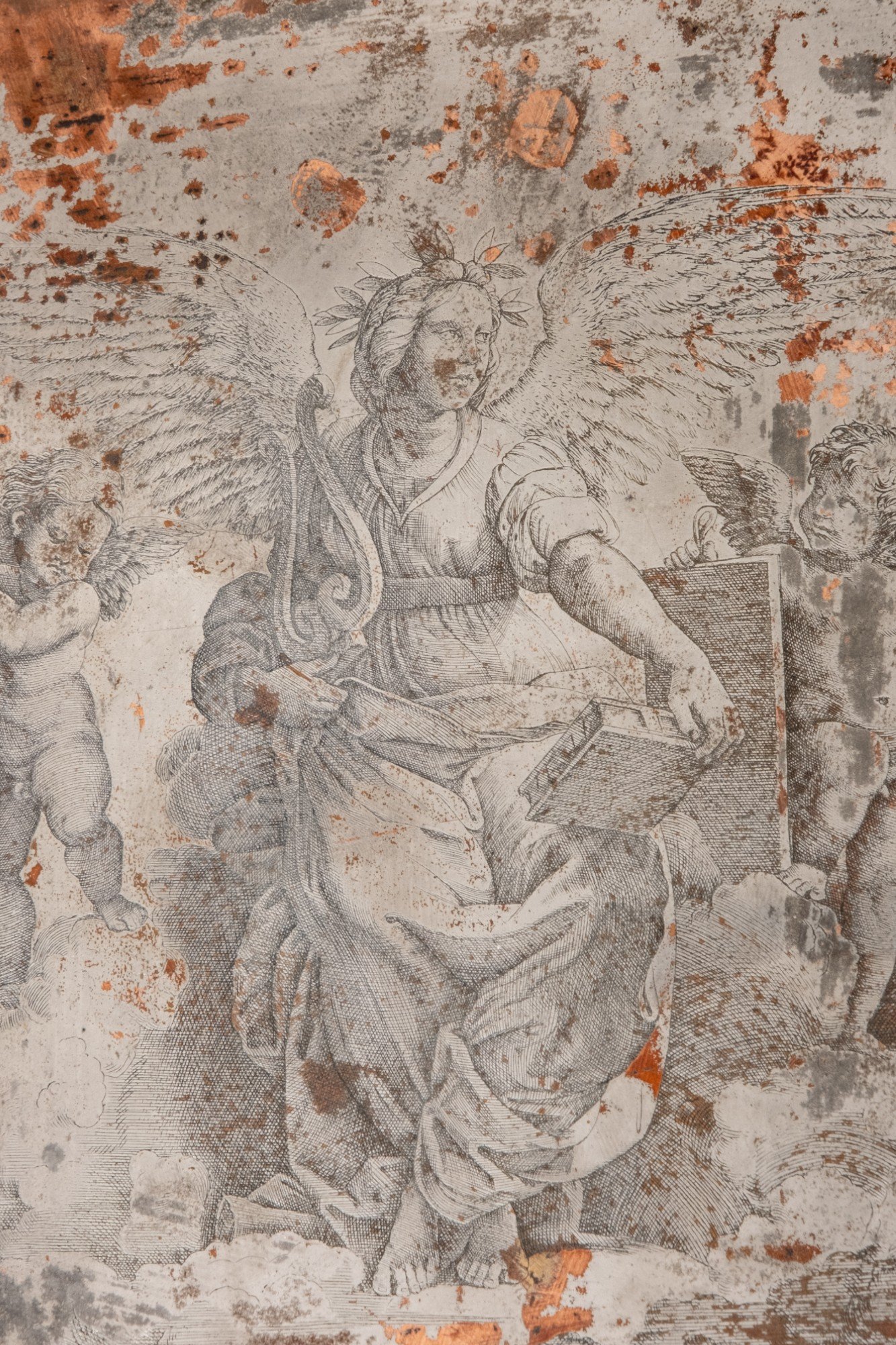 Image 1 of 18
Image 1 of 18

 Image 2 of 18
Image 2 of 18

 Image 3 of 18
Image 3 of 18

 Image 4 of 18
Image 4 of 18

 Image 5 of 18
Image 5 of 18

 Image 6 of 18
Image 6 of 18

 Image 7 of 18
Image 7 of 18

 Image 8 of 18
Image 8 of 18

 Image 9 of 18
Image 9 of 18

 Image 10 of 18
Image 10 of 18

 Image 11 of 18
Image 11 of 18

 Image 12 of 18
Image 12 of 18

 Image 13 of 18
Image 13 of 18

 Image 14 of 18
Image 14 of 18

 Image 15 of 18
Image 15 of 18

 Image 16 of 18
Image 16 of 18

 Image 17 of 18
Image 17 of 18

 Image 18 of 18
Image 18 of 18



















Kayama Matazo 6-panel lacquer painting, Japanese, 1927-2004
Important and Rare, Kayama Matazo, (Japanese, 1927-2004),6-panel lacquer HAND painting, "A Thousand Cranes", gilt and black lacquer painted with applied gold leaf and silver leaf foil on wood panels. The work like many of his pieces is unsigned and therefore attributed.
History: The Nihonga painter Matazo Kayama, was honored and designated a "Living National Treasure" and a recipient of the Order of Cultural Merit. His works seldom become available in the United States. This piece is part of a larger body of work. Having seen the spectacle of thousands of cranes taking flight during the winter in the Izumi region of Kagoshima Prefecture, Kayama studied the artistic vocabulary of the Rimpa School to depict his subject. With the sun and moon on either side, the cranes, arranged in groups against a pattern of surging waves, fly in a spiral-like form from the right to the left. The belt of cranes, based on repeated patterns, was clearly inspired by Tawaraya Sotatsu’s Poem Scroll with Underpainting of Cranes (17th century, Kyoto National Museum Collection), but the majestic effect of the space in this work is unique to Kayama.
Provenance: The Collection of Olga & Arthur Rankin. Rankin was a noted director and producer. Rankin began his career as an art director for the American Broadcasting Company in the 1940s. In 1955, he and Jules Bass formed the production company Videocraft International to produce television commercials. In 1960, they moved into the area of animation, and in 1968, changed the name of their company to Rankin/Bass Productions. The two worked closely together for many years, co-directing and producing a wide array of stop motion animated features and cartoons, which Rankin had referred to as "Animagic". In 1977, Rankin and Bass produced a version of J. R. R. Tolkien's The Hobbit, for which they were awarded the Peabody Award.
Measurement: Panels Each: 78 x 11 3/8 in. (198.1 x 28.9 cm.), All Inclusive: 78 x 68 1/4 in. (198.1 x 173.4 cm.) Approx
Important and Rare, Kayama Matazo, (Japanese, 1927-2004),6-panel lacquer HAND painting, "A Thousand Cranes", gilt and black lacquer painted with applied gold leaf and silver leaf foil on wood panels. The work like many of his pieces is unsigned and therefore attributed.
History: The Nihonga painter Matazo Kayama, was honored and designated a "Living National Treasure" and a recipient of the Order of Cultural Merit. His works seldom become available in the United States. This piece is part of a larger body of work. Having seen the spectacle of thousands of cranes taking flight during the winter in the Izumi region of Kagoshima Prefecture, Kayama studied the artistic vocabulary of the Rimpa School to depict his subject. With the sun and moon on either side, the cranes, arranged in groups against a pattern of surging waves, fly in a spiral-like form from the right to the left. The belt of cranes, based on repeated patterns, was clearly inspired by Tawaraya Sotatsu’s Poem Scroll with Underpainting of Cranes (17th century, Kyoto National Museum Collection), but the majestic effect of the space in this work is unique to Kayama.
Provenance: The Collection of Olga & Arthur Rankin. Rankin was a noted director and producer. Rankin began his career as an art director for the American Broadcasting Company in the 1940s. In 1955, he and Jules Bass formed the production company Videocraft International to produce television commercials. In 1960, they moved into the area of animation, and in 1968, changed the name of their company to Rankin/Bass Productions. The two worked closely together for many years, co-directing and producing a wide array of stop motion animated features and cartoons, which Rankin had referred to as "Animagic". In 1977, Rankin and Bass produced a version of J. R. R. Tolkien's The Hobbit, for which they were awarded the Peabody Award.
Measurement: Panels Each: 78 x 11 3/8 in. (198.1 x 28.9 cm.), All Inclusive: 78 x 68 1/4 in. (198.1 x 173.4 cm.) Approx













































